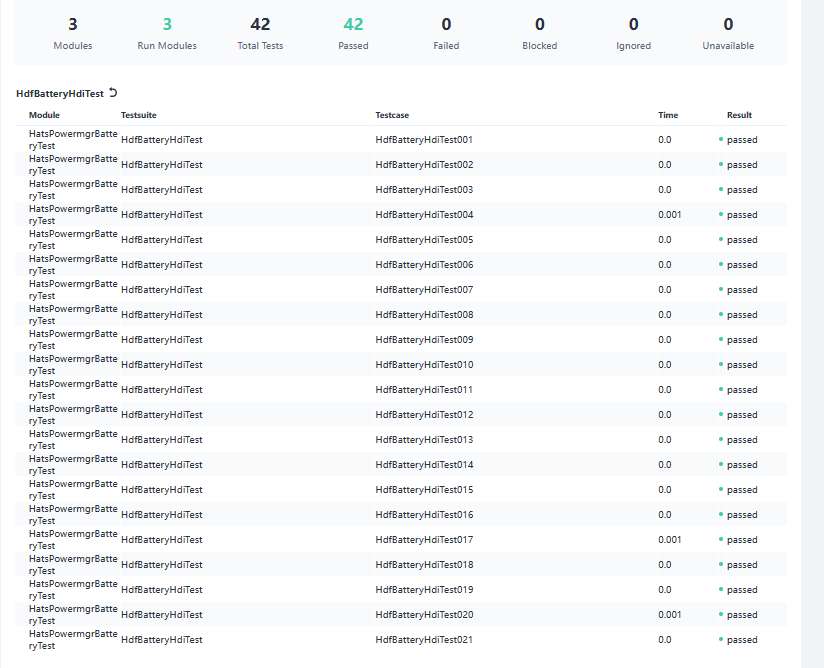harmony 鸿蒙Charging Current and Voltage Limit Customization
Charging Current and Voltage Limit Customization
Overview
Introduction
By default, OpenHarmony supports setting of charging current and voltage limits. When a device is being charged, the battery temperature may become excessively high due to the impact of ambient environment. In such a case, the charging current or voltage needs to be limited to ensure safety use of the device. However, the impact of charging current or voltage on device safety varies according to product specifications. To address this issue, OpenHarmony provides the function of customizing charging current and voltage limits.
Constraints
The configuration path for battery level customization is subject to the configuration policy. In this development guide, /vendor is used as an example of the configuration path. During actual development, you need to modify the customization path based on the product configuration policy.
How to Develop
Setting Up the Environment
Hardware requirements:
Development board running the standard system, for example, the DAYU200 or Hi3516D V300 open source suite.
Environment requirements:
For details about the requirements on the Linux environment, see Quick Start.
Getting Started with Development
The following uses DAYU200 as an example to illustrate charging current and voltage limit configuration.
Create the
batteryfolder in the product directory /vendor/hihope/rk3568.Create a target folder by referring to the default folder of charging current and voltage limit configuration, and install it in
//vendor/hihope/rk3568/battery. The content is as follows:profile ├── BUILD.gn ├── battery_config.jsonWrite the custom
battery_config.jsonfile by referring to the battery_config.json file in the default folder of charging current and voltage limit configuration. For example:{ "charger": { "current_limit":{ "path": "/data/service/el0/battery/current_limit" }, "voltage_limit":{ "path": "/data/service/el0/battery/voltage_limit" } } }Write the
BUILD.gnfile by referring to the BUILD.gn in the default folder of charging current and voltage limit configuration to pack thebattery_config.jsonfile to the//vendor/etc/batterydirectory. The configuration is as follows:import("//build/ohos.gni") # Reference build/ohos.gni. ohos_prebuilt_etc("battery_config") { source = "battery_config.json" relative_install_dir = "battery" install_images = [ chipset_base_dir ] # Required configuration for installing the battery_config.json file in the vendor directory. part_name = "product_rk3568" # Set part_name to product_rk3568 for subsequent build. }Add the build target to
module_listin ohos.build in the/vendor/hihope/rk3568directory. For example:{ "parts": { "product_rk3568": { "module_list": [ "//vendor/hihope/rk3568/default_app_config:default_app_config", "//vendor/hihope/rk3568/image_conf:custom_image_conf", "//vendor/hihope/rk3568/preinstall-config:preinstall-config", "//vendor/hihope/rk3568/resourceschedule:resourceschedule", "//vendor/hihope/rk3568/etc:product_etc_conf", "//vendor/hihope/rk3568/battery/profile:battery_config" # Add the configuration for building of battery_config. ] } }, "subsystem": "product_hihope" }In the preceding code,
//vendor/hihope/rk3568/battery/is the folder path,profileis the folder name, andbattery_configis the build target.Build the customized version by referring to Quick Start.
./build.sh --product-name rk3568 --ccacheBurn the customized version to the DAYU200 development board.
Debugging and Verification
Build the battery-specific hats test cases. For details about the build commands and framework setup, see XTS Subsystem.
Run the test cases, and check the test report.

Reference
During development, you can refer to the default charging current and voltage configuration, as shown below:
{
"charger": {
"current_limit":{
"path": "/data/service/el0/battery/current_limit"
},
"voltage_limit":{
"path": "/data/service/el0/battery/voltage_limit"
}
}
}
Packing path: /system/etc/battery
你可能感兴趣的鸿蒙文章
harmony 鸿蒙AI Framework Development Guide
harmony 鸿蒙Neural Network Runtime Device Access
harmony 鸿蒙Application Privilege Configuration
harmony 鸿蒙Setting Up a Development Environment
harmony 鸿蒙Development Guidelines
harmony 鸿蒙Application Framework Overview
harmony 鸿蒙ArkCompiler Development
harmony 鸿蒙Window Title Bar Customization Development (ArkTS)
- 所属分类: 后端技术
- 本文标签: